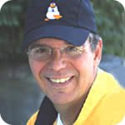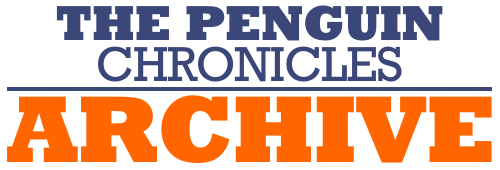You're in good hands
 When marathoners hit the streets on any given Sunday, thousands of medical volunteers have their backs.
When marathoners hit the streets on any given Sunday, thousands of medical volunteers have their backs.
Never stand directly in front of a runner after they've finished a marathon. It's a mistake you only make once - and it'll cost you a pair of shoes.
I learned this last November at the ING New York City Marathon, when Lewis Maharam, M.D., the marathon's medical director, allowed me and my wife, running coach Jenny Hadfield, to join his medical team in the command center at the race finish line. Luckily, my shoes survived the experience unscathed. A young medical volunteer whom I happened to be standing next to, however, learned the hard way. While trying to steady a wobbly finisher, he grabbed the man head-on by the shoulders and caught the full force of digestive evacuation. Now that's taking one for the team.
And what a team they had on marathon day in New York: 2,000 medical volunteers from every hospital and major medical group in the five boroughs. These highly skilled men and women stood ready to help thousands of runners safely complete the race.
Jenny and I were set up in "Triage A Area," just 10 yards past the finish line. Our job was to be an extra pair of eyes. It's not that Jenny and I are medical people, because we're not. But we are marathon people. We've been at enough race finishes to know what honest fatigue looks like versus the signs of a real medical problem.
As expected, we saw everything from finishers who simply needed an outstretched arm to steady themselves to those who needed a stretcher. One 34-year-old woman, who'd finished in just over six hours, fell to her knees. A couple of volunteers caught her before she went all the way down and rushed her into the medical tent. We watched as a whole team of red-shirted medics elevated, massaged, and iced the woman's legs. Within 15 minutes, she was sitting up, saying she felt great. Then one of the medical staffers walked with her to pick up her medal.
Not long after, another runner was carried into the tent. This guy's buddy said that the runner drank two cups of water at each aid station. The volunteers immediately noticed his swollen hands - so swollen they couldn't get his wedding ring off. One medic called Dr. Maharam at the command center to tell him of the suspected hyponatremia case (dilution of blood-sodium levels), while another put salt on the back of the runner's hand and had him lick it off. Within four minutes of entering the tent, the 45-year-old was transferred to an ambulance that took him to the hospital - where, we later found out, he recovered fully. I heard one volunteer say, "Boy, that worked just like we said it should in orientation."
Even when the sheer number of runners should have overwhelmed the medical staff at the finish line, there were always volunteers ready to catch stumbling runners or minister to the injured. It's a scene that's repeated all around the country every marathon weekend, like this month in Boston when 1,300 medical volunteers will be on hand. Unless you happen to have a problem, you may never see them. But I have seen them. And on behalf of all runners, I salute and thank them. They are the true unsung heroes of our sport.
Waddle on, friends.

